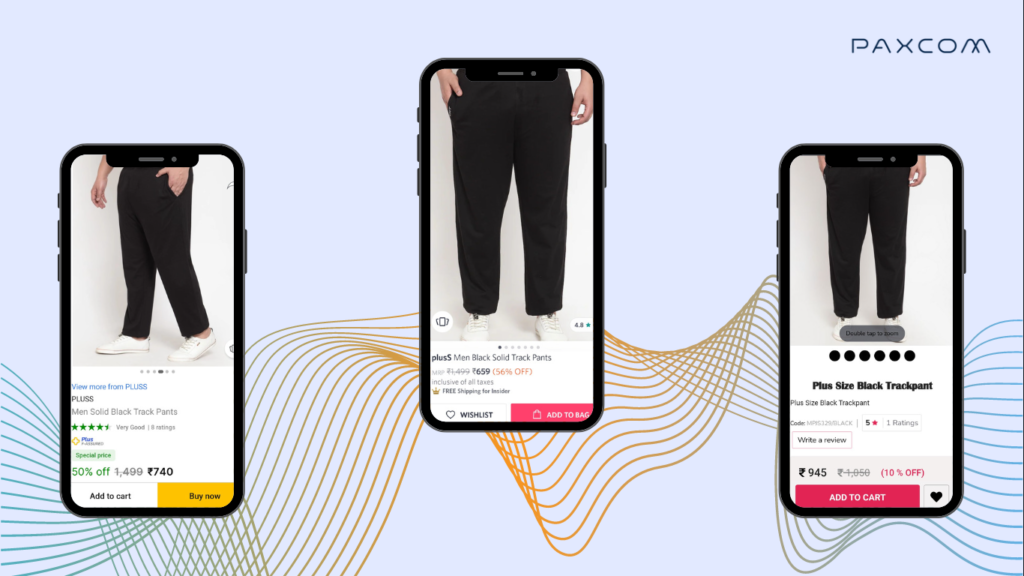There is no question that online selling plays a significant role in the economy today, whether it’s through your own website, in-store pickup, or marketplace sites like Amazon, Etsy, Flipkart, or even Instagram, TikTok, and even WhatsApp.
With the growth of the eCommerce industry, online shopping options and customer choices have multiplied along with it, accounting for 46% of cumulative eCommerce sales by 2023.
One of the most significant aspects required in today’s scenario is flexibility. Consumers are getting diversified; hence retailers have to be flexible enough to cater to the demands of the consumers and attract new ones. But, if it’s merely about consumer happiness, why has multi-channel selling grown so popular? How are brands utilizing this strategy as a game changer in increasing sales and maximizing the potential of their stores?
Table of Contents
Multi-channel Selling
The technique of listing and selling your products on multiple sales channels, usually in a business-to-consumer (B2C) environment, is known as multichannel selling. This strategy incorporates your own website, eCommerce marketplaces, mobile applications, and/or a physical store.
You must be aware that online marketplaces house various brands and businesses. The chances of finding the same product on platforms like Flipkart, Amazon, Walmart, and even Instagram are high. Now the dilemma arises, How can you stand out amongst the brands and make your products visible? Well, Unique experiences are provided through high-quality product images, user-friendly web design, and augmented reality (AR/AI).
But before starting to diversify your business, it is equally important to understand the algorithms and functioning of the channels. Once you get the hang of them, it will become feasible for you and the consumers because your products will be displayed and meet the targeted audience’s requirements.

A Multi-channel brand enjoys strong branding and customers and records exponential growth in sales and target customers. While diving into Multi-channel strategies, the brand should conduct research on its competitors as well as customers. While setting up an online store on any social media platform, the brand should emphasize influencer collaborations, referrals, and best-selling products. This strategy will increase the brand’s visibility, help with customer retention, and gain new customers.
Here are some facts about consumer shopping behavior
- Over 70% of buyers prefer to shop through many channels.
According to multichannel marketing trends, 73% of customers interact with companies across various platforms. Approximately 86% of consumers migrate between channels when buying, and 25% have purchased items from a brand’s online store while standing in the company’s physical store.
- A typical user has over five social media accounts.
Having a presence on multiple platforms demonstrates the power of multi-channel selling. Do you know on average, a consumer has numerous accounts across channels? Engaging with customers online is vital since it expands the brand’s reach and promotes expansion. With multichannel marketing, you can connect with customers through their preferred channels and offer them relevant links to your products wherever they may be browsing.
The Benefits of Multichannel eCommerce
Multichannel selling has several advantages, as it allows a brand to grow both horizontally and vertically. Here are some of the benefits that show why one should pursue Multichannel Selling
- Wider Audience & Better Growth
Having your products listed across multiple channels provides you with the opportunity to display them to a more vast audience, which ultimately results in increasing brand awareness.
Well, it goes without saying that “the more you come across a similar name or product, the more you research and buy it as you become familiar with that.” Discovering the product on multiple platforms helps build trust and makes the consumer inclined toward the product.
Hence, you will not only tap into a more extensive base but will also have improved engagement and visibility. The brand will gain credibility and help you gain a competitive advantage.
- Higher Sales & Revenue
Once the product page is optimized according to the algorithms across various channels, the possibility of purchase increases without hassle. Since people’s buying habits and preferred platforms are different, it’s not practical to only use one platform. However, if a product is available to buy on multiple channels, customers may find it quickly and easily.
Increased conversions and fewer cart abandonments lead to higher revenue generation, enabling you to maximize sales opportunities.
- Precise Far-sighted Data
The channels provide you with a wide variety of datasets about your best-selling or most preferred products, customer details such as location, purchase history, and many more.
This accumulated data will help you understand, upscale, and evaluate your strategies. Such metrics aid you in appropriately building your sales plan and marketing techniques to boost your conversion rate.
The fundamental difference between an old seller or shopkeeper and a new one is that the old stores have more contacts, many people recognize their name, and they have a lot of foot traffic in their shop. If a vendor has data about the masses, what they seek, where they reside, and their purchasing power, they may target the needy better.
But, as the business grows, it might take a lot of work for the brand to keep up with the inventory, orders, promotions, price tracking, and much more. It further begins to expand as the advantages of this process outweigh the challenges one has to deal with. Here, have a look at some of the best multichannel selling practices that will further expedite the process.
Best Practices for Multichannel Selling

Listing out some of the best practices to help you choose the right path. We are all aware of the n number of online platforms to sell products. But how to choose the one that fits your brand palette?
- Relevancy to your Business
Amidst the many choices available, you should research whether the platform complements your business profile. What kind of consumers does the platform attract? Then, it is highly recommended to go through the terms and conditions associated with it.
For a B2C brand, selling on social commerce platforms like Instagram and Facebook may be beneficial, but these platforms may not be the perfect platform for B2B brands.
- Hassle-free Inventory Management
The more you have on hand, the more difficult it gets to manage things. If appropriately strategized, inventory management might become a manageable challenge. As you dive into the process, the frequency of orders increases gradually.
Thus having digital shelf analytics software to help keep you track of the inventory across channels and real-time data will save you from the last-minute stock-out hassles.
- Automation is the Key
Automation goes a really long way. The technology helps reduce costs and saves you ample time and energy with daily tasks.
It helps you leverage your business by leaving you enough time to focus on the other important aspects, such as strategizing, and marketing. The automation tools further assist you in keeping track of the inventory and sales, along with reducing manual workload.
Finding the Right Multichannel eCommerce Software Partner
Multichannel Selling may sound intriguing, but it’s not easy to master if you don’t handle it well. Since every software has unique specifications, finding the right fit for your business can be challenging. Your brand’s particular needs and expectations need to be clearly identified.
An ideal software will not only offer lucrative features just for the sake of having the technological integration instead, but the software will also be your guide in providing consecutive reports on multiple metrics such as stock, price dynamics, global tracking, filterable, and most crucial is that the software can be altered as per the brand’s requirements.
Our eCommerce omnichannel software provides complete flexibility, so brands can select the metrics they want to track. In addition to allowing you to import catalogs, this SaaS-based tool also offers you multiple tags as well as multichannel-based product ID support.
In addition to providing a unified view of orders received through different channels, the order management functionality will automatically bifurcate those orders to the appropriate distributors. Besides inventory alerts, product label printing, and customer return management, we also help you with warehouse management services.
The key is to choose software that offers features, resources, and flexibility. Technology enhancements have made it possible to sell products and deliver a consistent customer experience across all channels.
Get started with Paxcom’s Omni Channel cloud platform in minutes, and begin enjoying the benefits of having a solid omnichannel foundation for your business. Please fill out the Form or email us at info@paxcom.net to learn how we can amplify your brand and help you achieve your goals.














